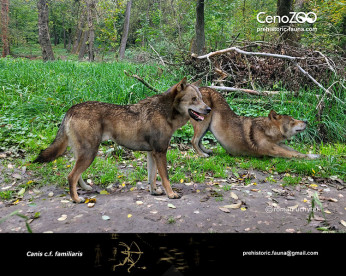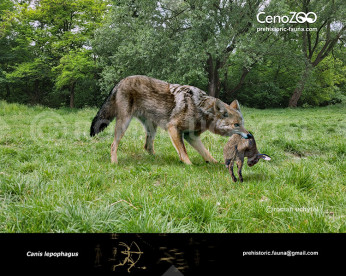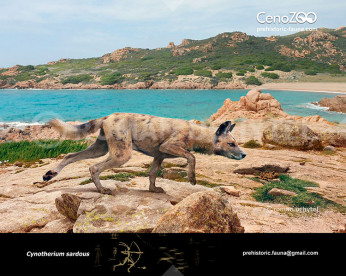Etruscan wolf (Canis etruscus)
198198Etruscan wolf (Canis etruscus Major, 1887)
Order: Carnivora
Family: Canidae
Temporal range: during the late Pliocene - Early Pleistocene (Europe)
Dimensions: length - 1,2 m, height - 65 сm, weight - 20 kg
The Etruscan wolf is an extinct species of canine that was endemic to Mediterranean Europe during the Early Pleistocene and has been accepted as the ancestor of C. mosbachensis that is the ancestor of the grey wolf (C. lupus) for a long time. A recent research suggest that C. borjgali from Dmanisi has to be considered the ancestor of C. mosbachensis.
The dispersal of carnivoran species occurred approximately 1.8 million years ago and this coincided with a decrease in precipitation and an increase of annual seasonality which followed the 41,000 year amplitude shift of Milankovitch cycles. First to arrive was C. etruscus, which was immediately followed by C. arnensis and Lycaon falconeri, and then the giant hyena Pachycrocuta brevirostris. These were all better adapted to open, dry landscapes than the two more primitive canini Eucyon and Nyctereutes that they replaced in Europe.
The Upper Valdarno Basin (Florence and Arezzo, Italy) has provided the remains of three fossil canid species dated to the Late Villafranchian era of Europe 1.9–1.8 million years ago that arrived with a faunal turnover around that time. The Swiss paleontologist Charles Immanuel Forsyth Major discovered two species in this region, these being the Falconer's wolf (Canis falconeri Forsyth Major 1877) that was later reclassified as Lycaon falconeri, and the smaller Etruscan wolf (C. etruscus Forsyth Major 1877).
Оплата
У Вас є кілька зручних способів купівлі зображення: кредитна чи дебетова картка Visa, Mastercard, Maestro; PayPal або банківський переказ
Etruscan wolf (Canis etruscus Major, 1887)
Order: Carnivora
Family: Canidae
Temporal range: during the late Pliocene - Early Pleistocene (Europe)
Dimensions: length - 1,2 m, height - 65 сm, weight - 20 kg
The Etruscan wolf is an extinct species of canine that was endemic to Mediterranean Europe during the Early Pleistocene and has been accepted as the ancestor of C. mosbachensis that is the ancestor of the grey wolf (C. lupus) for a long time. A recent research suggest that C. borjgali from Dmanisi has to be considered the ancestor of C. mosbachensis.
The dispersal of carnivoran species occurred approximately 1.8 million years ago and this coincided with a decrease in precipitation and an increase of annual seasonality which followed the 41,000 year amplitude shift of Milankovitch cycles. First to arrive was C. etruscus, which was immediately followed by C. arnensis and Lycaon falconeri, and then the giant hyena Pachycrocuta brevirostris. These were all better adapted to open, dry landscapes than the two more primitive canini Eucyon and Nyctereutes that they replaced in Europe.
The Upper Valdarno Basin (Florence and Arezzo, Italy) has provided the remains of three fossil canid species dated to the Late Villafranchian era of Europe 1.9–1.8 million years ago that arrived with a faunal turnover around that time. The Swiss paleontologist Charles Immanuel Forsyth Major discovered two species in this region, these being the Falconer's wolf (Canis falconeri Forsyth Major 1877) that was later reclassified as Lycaon falconeri, and the smaller Etruscan wolf (C. etruscus Forsyth Major 1877).

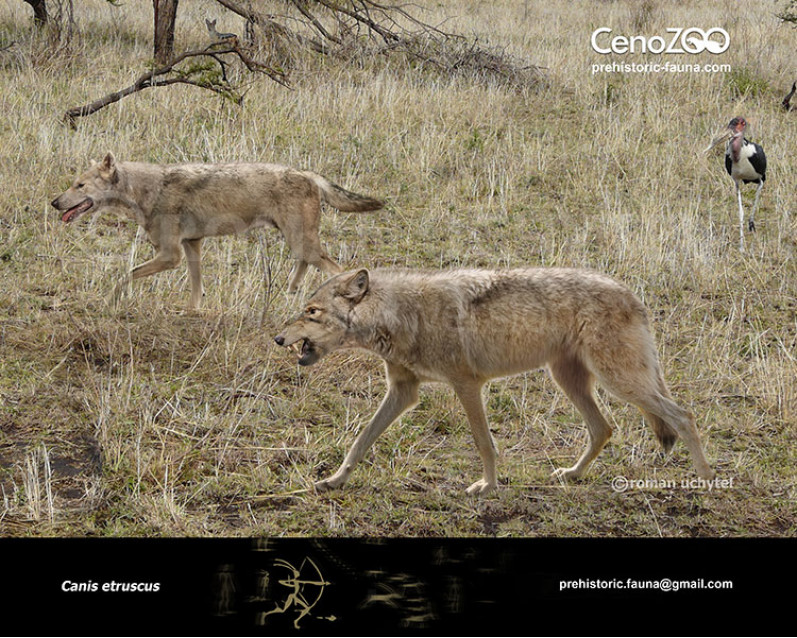
-797x638.jpg)
1-797x638.jpg)

-70x56.jpg)
1-70x56.jpg)
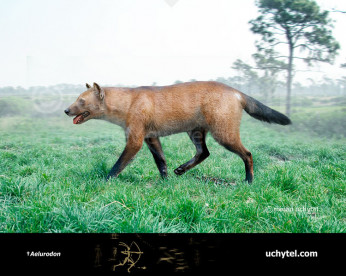
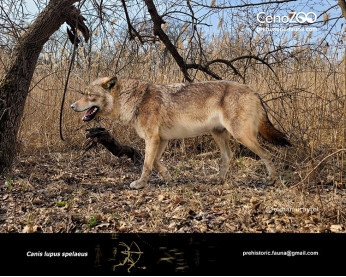
-346x277.jpg)
-lycanoides-346x277.jpg)
